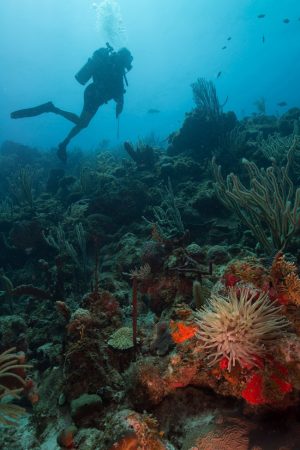 A broad estuary on the northern coast of St. Croix in the U.S. Virgin Islands, Salt River Bay National Historical Park and Ecological Preserve is a site of great natural and historical significance. While protecting upland watersheds, mangrove forests and a delicate ecosystem that supports threatened and endangered species, Salt River Bay also features archaeological and historical heritage encompassing over 2,000 years and every period of human habitation in the Virgin Islands. This includes several Native American cultures, an encounter with Christopher Columbus and colonization by several European countries.
A broad estuary on the northern coast of St. Croix in the U.S. Virgin Islands, Salt River Bay National Historical Park and Ecological Preserve is a site of great natural and historical significance. While protecting upland watersheds, mangrove forests and a delicate ecosystem that supports threatened and endangered species, Salt River Bay also features archaeological and historical heritage encompassing over 2,000 years and every period of human habitation in the Virgin Islands. This includes several Native American cultures, an encounter with Christopher Columbus and colonization by several European countries.
Salt River Bay’s blend of sea and land includes coral reefs, a submarine canyon and some of the largest remaining mangrove forests in the Virgin Islands. Mangrove trees and shrubs live in coastal saline or brackish water and stabilize the coastline by reducing erosion from tides, waves and storm surges.
Salt River Bay also contains the Columbus Landing Site – where Christopher Columbus sent a longboat ashore on November 14, 1493 in search of fresh water during his second voyage to the New World and where the first recorded conflict between Native Americans and European explorers took place. This National Historical Site is the only known location where members of a Columbus expedition set foot on what is now U.S. territory.
For more information, visit Salt River Bay National Historical Park and Ecological Preserve.
